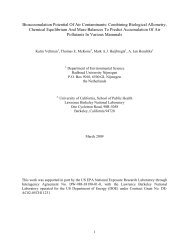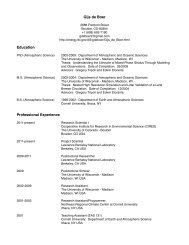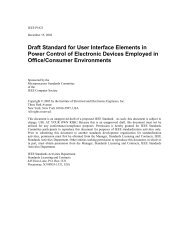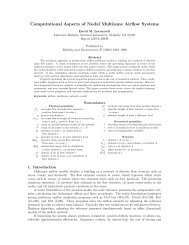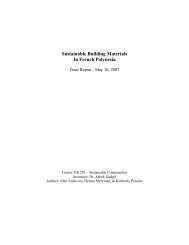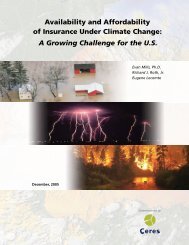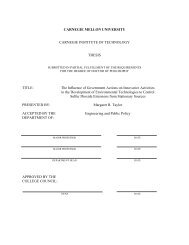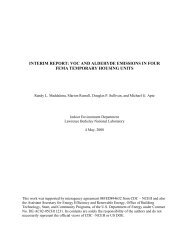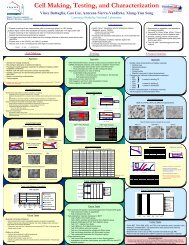Indoor Environment Department - Environmental Energy ...
Indoor Environment Department - Environmental Energy ...
Indoor Environment Department - Environmental Energy ...
You also want an ePaper? Increase the reach of your titles
YUMPU automatically turns print PDFs into web optimized ePapers that Google loves.
Impacts of <strong>Indoor</strong> <strong>Environment</strong>al Quality on Health,<br />
Comfort and Performance<br />
Life-Cycle Impact Assessment<br />
Statistical Data Analyses<br />
Knowledge of the relationship between indoor<br />
environmental quality and people’s health, comfort,<br />
and performance provides the critical foundation for<br />
ventilation and indoor air quality standards and for<br />
many decisions about how to design, operate, use,<br />
and maintain buildings. To assess how the indoor<br />
pollutants, thermal conditions, and related features<br />
of buildings affect health, work performance, school<br />
performance, and school absence, the <strong>Department</strong><br />
performs epidemiologic studies and experiments in<br />
buildings and completes critical reviews and metaanalyses<br />
of existing data.<br />
Life-cycle assessment addresses a broad range of impacts for technologies,<br />
industrial processes, and products in order to determine their propensity to<br />
consume natural resources or generate pollution. The term “life cycle” refers to<br />
the need to include all stages of a product or service—raw material extraction,<br />
manufacturing, distribution, use, and disposal. A life-cycle impact assessment<br />
(LCIA) provides characterization factors to compare the impacts of different<br />
product/service components. The <strong>Department</strong>'s research program is developing<br />
methods to study the life-cycle health and environmental impacts, as well as<br />
economic feasibility and performance of the various pathways from sunlight to<br />
energy, with a current emphasis on biofuels. The department is also assessing the<br />
environmental, economic, and health consequences of the construction, operation,<br />
and end-of-life treatment of buildings. A particular emphasis is on the<br />
improved knowledge of the interactions and potential trade-offs among<br />
economic, environmental, and health burdens linked to commercial and residential<br />
building energy performance and the environmental and economic impacts of<br />
building materials through the associated supply chains and building-use phase.<br />
Data analysis, model uncertainty propagation, and<br />
decision analysis are integral components of the<br />
<strong>Department</strong>’s research. We have developed innovative<br />
tools for analyzing data from experiments, propagating<br />
uncertainties of model inputs to output predictions, and<br />
decision making when faced with uncertain outcomes.<br />
Computational tools applied include Bayes Monte Carlo<br />
uncertainty analysis, conditional and regression trees,<br />
value-of-information analyses, and various multivariate<br />
and meta-analysis techniques. Recent applications<br />
include explaining data from various observational and<br />
field experiments, epidemiological studies (e.g., the<br />
effects of dampness and mold on health), and environmental<br />
pollutant fate predictions.



